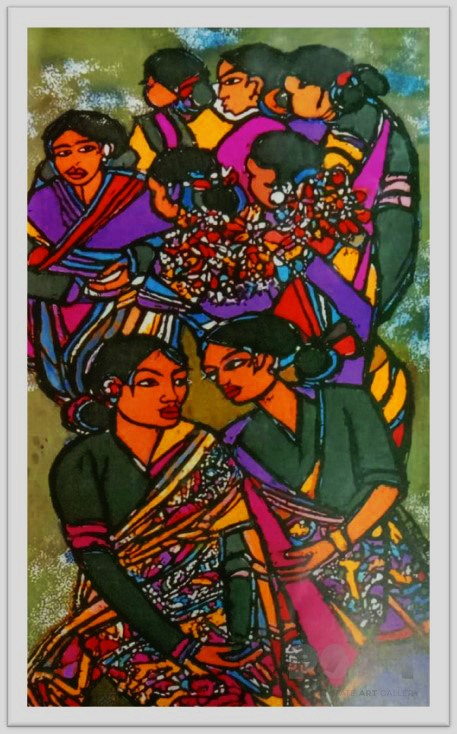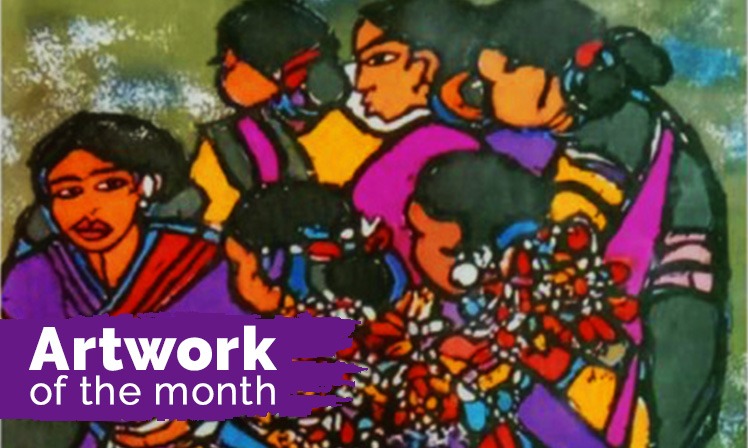Every month, we feature artwork from Penang State Art Gallery’s permanent collection.
By Elaine Chiew

Tay Mo-Leong, Indian Women, 2007, Batik, 183 x 107 cm
Image courtesy of Penang State Art Gallery.
Straddling the divide between art and craft, batik painting has been critiqued as privileging technical formalism over aestheticism, but this doesn’t trouble Tay Mo-Leong. He demonstrates his poetic sensibilities and vibrant colour palette in Indian Women, which depicts a circle of seated Indian women, gathered in convivial festiveness, dressed in saris of saturated hues and patterns. The predominant colours are red, orange, and his favourite, purple, aiming for a ‘stained glass’ effect, an art form he found inspirational on his European sojourns.
The women’s poses in this painting are dynamic: three face us, including two in the foreground, whose expressions suggest a qualified closeness, while the others have their backs to us, again suggesting an ambiguity within this gossip huddle. The figures are almost equal-sized, deliberately playing with fields of depth and perspective. Tay’s innovation of using a mixture of rice and soy bean paste, learned from a Japanese technique called rozome, to draw motifs onto fabric with the canting tool in batik tulis is boldly evidenced here in his expressive delineation of figures and motifs in black.
The women’s features are sensual—kohl-lined eyes, high cheekbones, and fleshy lips. Arguably caricaturish when considered together with his preferred skin-tones of brown and red, these details nevertheless form part of Tay’s diachronic treatment of Malay, Balinese or tropical women that are rarely Chinese, an ethnographic repertoire that alludes to batik’s long, hybrid regional history.
Tay was feted along with Chuah Thean Teng and Khalil Ibrahim as masters of batik painting in the 2004 exhibition “Revival—Evoking the Batik Tradition” at Balai Seni Negara. Born in Penang in 1938, he is considered part of the second generation of Penang artists. He also excels in watercolour, and has frequently exhibited nationally and abroad. Formerly Chairman of the Penang State Art Gallery, his retrospective was held at Lembaga Muzium Negeri there in 2009.
Further reading: Tay Mo-Leong, Tay Mo-Leong: Retrospective (Penang: Penang State Art Gallery, 2009).
Elaine Chiew is a writer and visual arts researcher. She has a published short story collection, edited and compiled an anthology about food, and has had numerous stories published in U.S., U.K., and Singapore anthologies. Currently, she is the recipient of a Singapore Chinese Cultural Centre grant to study early Singapore photography.

